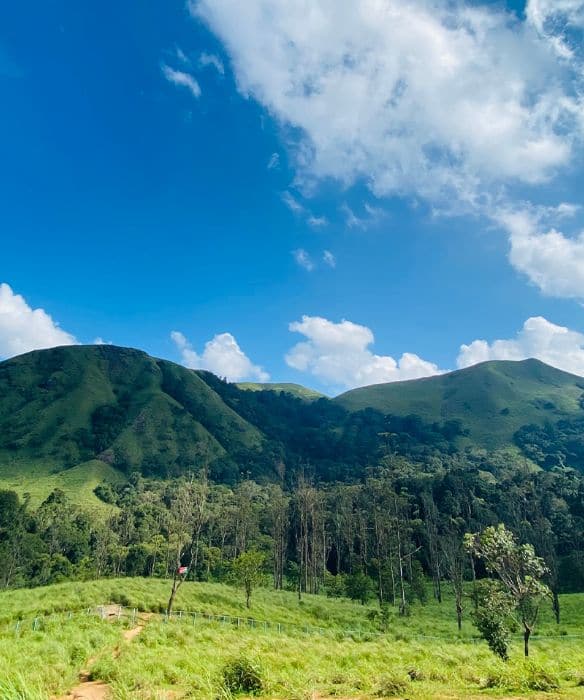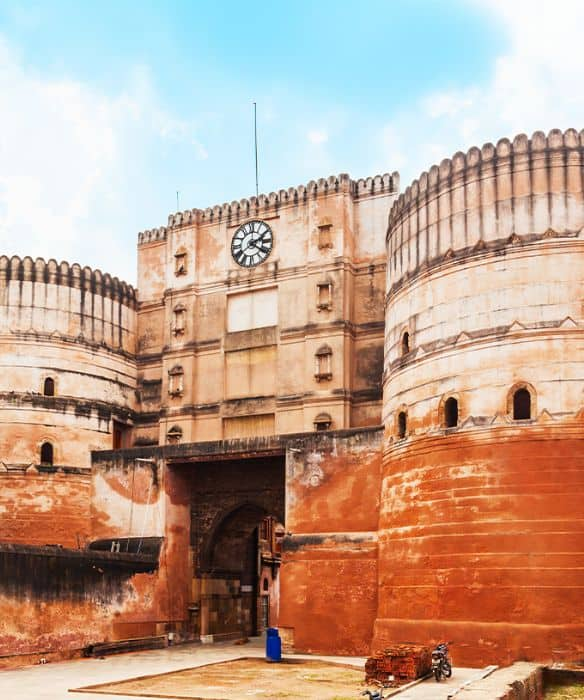Stay logged in to proceed with bookings, orders and offers.
On changing the terminal, you will loose items in your cart. Are you sure you want to change your terminal?
From bloody battlefield to serene sanctuary, this Nagaland village is marked by the Angami tribe’s extraordinary history.
Ms Ruzono’s steps quickened as we approached the cliff edge. I hurried to keep up, wondering what my guide was so eager to show me. She stopped in front of a tombstone etched with the epitaph 'G.H Damant, Killed at Khonoma, 1879'.
'He was killed here,' said Ms. Ruzono, her eyes gleaming with unmistakable pride. Confused, I said nothing. Why would anyone feel such triumph about a man's death 150 years ago? But as my guide continued talking, I began to understand her emotions.
For 29 years, a savage battle had raged in this territory, as the indigenous Angami tribe resisted the invasion of the British Forces. The period from 1850 to 1879 was a time of massive tumult. Looking at the tranquil landscape around us, I could hardly believe Ms. Ruzono's blood-curdling tales of gruesome war crimes.
G. H. Damant, I learned, was a British political officer who stormed the Angami village despite the villagers' warnings of dire consequences. Against the mighty British Forces, the small Angami tribe fought valiantly and Damant lost his life. His tombstone stands as a testament to the valour of the Angamis and a reminder of the repercussions of attacking their land.
Traditionally, the Angamis lived in isolation from the rest of the world, guarding their territories religiously. The British Forces made the costly error of mistaking the tribe's reclusive nature for military weakness. Believing such primitive peoples could be easily defeated, the British invaded Angami territory. The Angamis were strangers to modern warfare. They had never laid eyes on a gun and had no idea how such weapons worked. But during the war, the tribe got hold of artillery and learned how to effectively use it, even winning several battles.
As Ms Ruzono told me this story, I was amazed by the Angamis' ability to adapt and respond to terrifying circumstances. Old guns were still kept on show, strung outside some homes. Seeing me a bit jittery, Ms Ruzono laughed, 'Don't worry. They are antique and not loaded.' Phew!
The Angamis didn't turn non-violent overnight. Bird hunting was a way of life for many tribes in the region. At one point in time, rampant hunting had led to the near-extinction of many bird species – including the Tragopan, the state bird of Nagaland. Close to 300 Tragopans were killed by the Angamis in a single week in the early 1990s as part of a hunting competition. It slowly dawned on the Angamis that this was not a sustainable way of life. Understanding the need to sustain the fragile ecosystem of their beloved land, the village took a landmark decision to create a Tragopan sanctuary — a nature reserve spanning an area of 20 sq. km. This became India’s first community-led bird sanctuary.
The tribe's efforts weren't limited to saving the Tragopan. There were close to 200 bird species found in the region, along with numerous plant species that had to be conserved. Going against their age-old tradition, the village embraced a ban on logging and hunting to protect local flora and fauna. What's more, the Angamis even decided to ban Jhum cultivation (the practice of burning a field after harvest) in favour of more sustainable agricultural practices. I was overwhelmed by this story – this tribe had sacrificed their way of life for the sake of nature. In recognition of the Angamis' incredible efforts, the government invested Rs. 3 crores in making Khonoma a 'Green Village'. This is a status attributed to villages that have drastically reduced the harm to their flora and fauna. In 2005, Chief Minister Neiphiu Rio recognised this effort, making Khonoma a prominent site on the tourist map.
Khonoma is built on hill slopes with homes perched on almost every corner. A series of steep stone pathways wind along these slopes. Gorgeous flowers and black chillies (endemic to the region) bedeck the place. I was amazed when Ms Ruzono informed me that the village produces around 60 varieties of rice and close to 40 types of organic crops in a year. How could such a tiny village produce so much? Seeing my look of incredulity, Ms Ruzono gestured to the expanse of land around us. It turned out this 700-year-old village is spread over an area of more than 120 sq. km. The landscape surrounding the village was breathtaking – a 360-degree view of contoured rice fields blending seamlessly with the densely forested foothills. We moved on to the fortified hamlets within the village. During the long war, these stone structures helped in defence and storage. Traditional Naga paintings with peculiar shapes and structures adorned the doors. Curious, I leaned closer to examine one such painting – a single sinister-looking eye. 'These are Guarding Eyes against invaders,' explained my guide.
As Ms Ruzono continued her story, I had to remind myself that this war had raged over a century ago. Memories of war were as fresh as open wounds in the community's social memory. 'These stories are told and handed over generations so that the tribe never forgets the sacrifices made by their ancestors,' she said. As I was admiring a house with cobalt blue walls and black windows, I stumbled upon a kid. He was staring glumly at a cross in the ground. When I asked what was wrong, the boy told me his grandmother had died last week. Angamis have the tradition of burying the dead near their homes. 'It gives them a feeling of closeness when someone dies,' said Ms Ruzono. A ceremony follows the demise of the family member and the coffin is always buried near the house walls. I was moved by this concept of the dead sharing space with the living. Bending to the boy's eye level, I offered him a bar of chocolate. His teary eyes cleared a bit as he took the candy, but I couldn't see any hint of a smile on his face. I just patted his head and moved on.
Did you ever imagine you could buy a shawl woven right in front of you? Yes, that's possible in Khonoma. I visited the homes of many weavers and saw the beautiful art of hand-weaving. The rich thread and intricate designs could make anyone's jaw drop. I ended up buying a shawl, a bedsheet, and a sweater from three different huts. There were no billing counters, queues, price tags, or scan codes – just an exchange of goods for money, directly with the producer. I just loved the experience. All the weavers were kind enough to allow me into their homes and showcase their weaving skills. One of them even offered me a lunch of rice and pork!
If you're wondering how I understood their language, it was through Ms Ruzono. As per local regulations, the village can only be visited when accompanied by a recognized government guide. Ms Ruzono was my new friend and guide. As the village tour ended, it was time to travel back to Kohima. No other place in my recent memory had left me feeling so touched. The tales of historic valour, stories of the chivalrous Angami warriors, their landmark decision to conserve nature, the camaraderie of the villagers, and the hospitality of the people were all heartwarming. I think Khonoma is an incredible example of adaptability, sustainability, and coexistence.
Getting There:The closest airport to Khonoma is Dimapur Airport, which has direct flights to and from Kolkata Airport . From Dimapur, one can travel to Kohima, which is only 20 km. from Khonoma.
Rules: One cannot travel to Khonoma without a travel permit. The State Government of Nagaland issues this document.





The Adani One expressly disclaims all liability, direct and indirect, in respect to actions taken or not taken based on any or all the contents of this Blog. The Blog is an opinion of the contributor based on the collation of data from various sources and is provided only for information purpose. Adani One does not canvass, advertise, solicit, invite or induct for any product, merchandise, information, brand or any other materials mentioned in the Blog, nor does it obtain any monetary benefit from the same. Reader is advised to read and apply his/her intellect and discretion in this regard. Any Intellectual Property mentioned in this blog belongs to the rightful owner. We do not intent to claim any interest over the same.